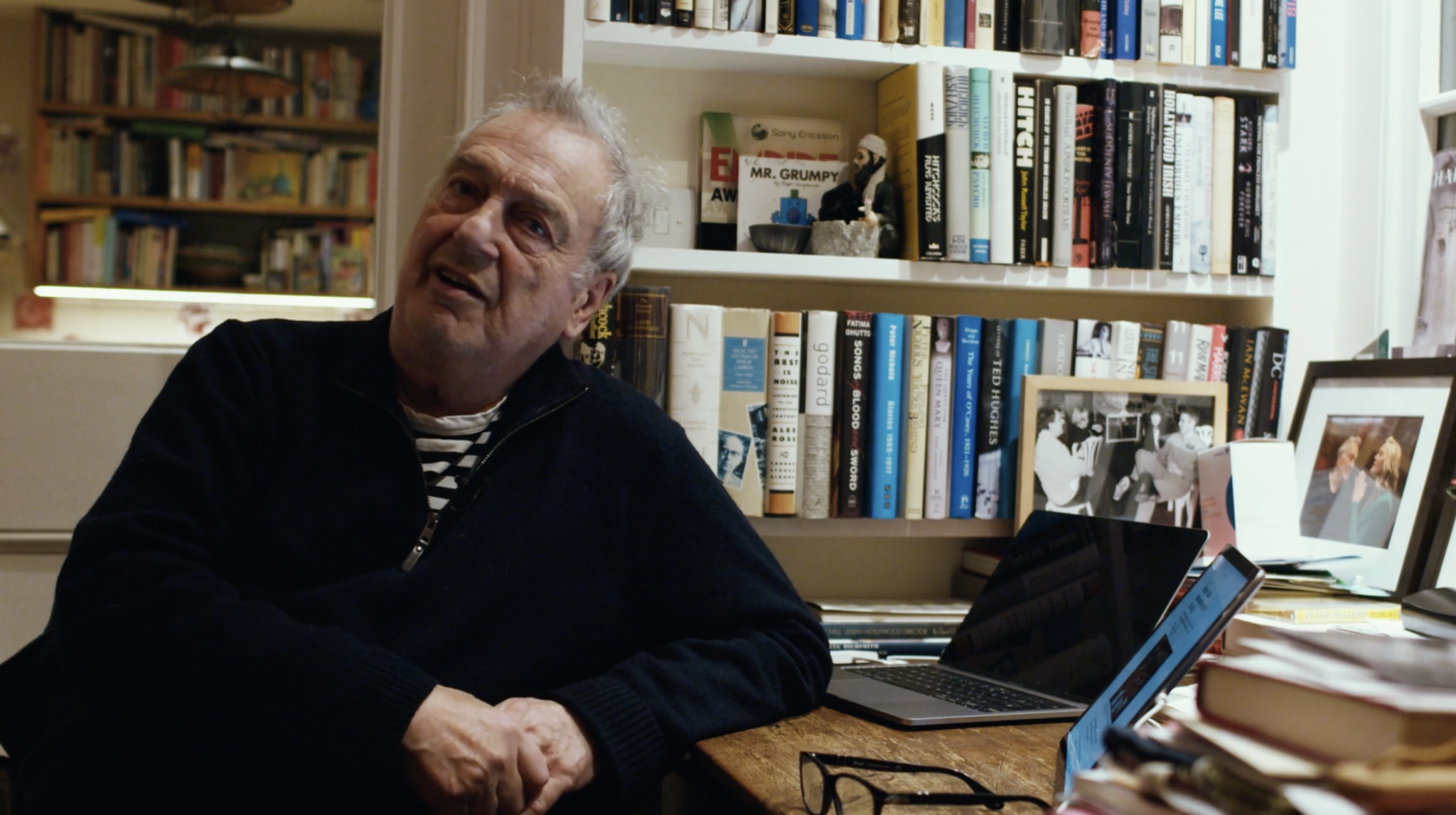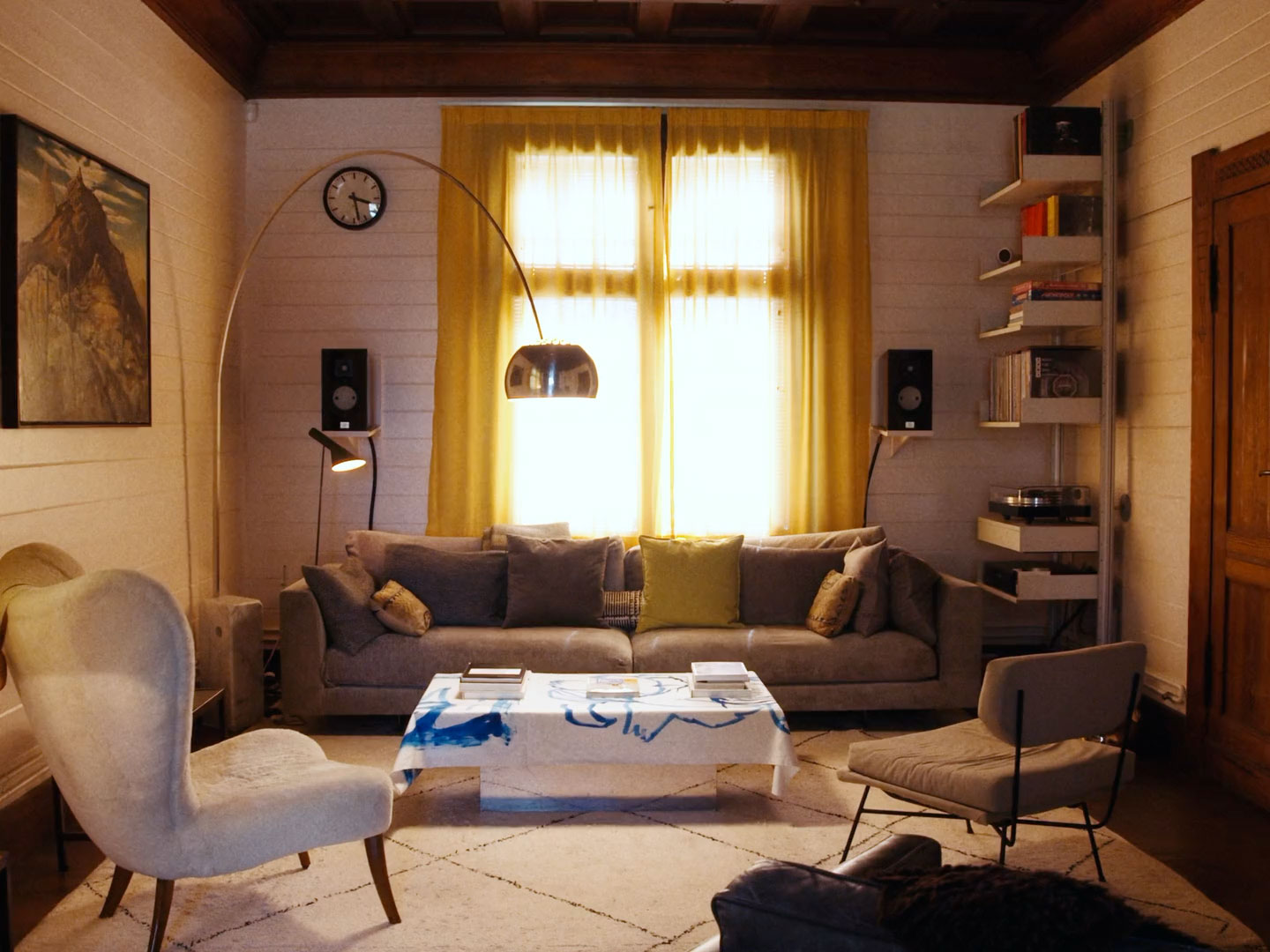

Luchino Visconti di Modrone, Count of Lonate Pozzolo, was a chain smoking, Marxist, Roman Catholic, gay filmmaker from a Milanese noble family that came to prominence in the 13th century. It is fair to say he was a man of contradictions, contradictions that translated into complex ideas and stunning images throughout his filmmaking career. As a boy, he lived with his mother between Milan and Villa Erba on Lake Como. His father was Chamberlain to King Victor Emmanuel III of Italy and owned a villa in Rome that Luchino later inherited and lived in for many years. All that is to say he had a rather privileged early life and with that came great exposure to art, music and theatre. In the 1930s, he became Jean Renoir’s assistant, from whom he learned the value of creating a social environment in which to draw and develop characters. This discipline and way of life lead to a skill at capturing authentic behaviours and realistic worlds. Specifically communicating the relationship between individuals and the worlds they inhabit. Hence the impeccably reconstructed worlds that Visconti used to convey his view on history, politics and the human condition.
Despite his upbringing and the expectations that people may have had for him, Visconti’s first film, Ossessione (1943) looked at the gritty life of ordinary people. This film marks the beginning of what would become the neorealist movement in Italian cinema, predating Rossellini’s Open City (1945) and De Sica’s Bicycle Thieves (1947). Made while Mussolini was still in power, Ossessione was controversial for the country’s censors and politicians. As a result, the original negative was destroyed. However by the time the original was destroyed Visconti had joined the resistance and had made a duplicate that he kept safe. So while the film was difficult to exhibit, it survived and was later released commercially in the US in 1977. After the war, Visconti made more neorealist films focusing on the real lives of real people affected by the struggles and corruption of Italian life under fascism and in its aftermath. La Terra Trema (1948) followed Sicilian fishermen’s efforts at collective action against powerful wholesalers. The film starred ordinary villagers playing variations on themselves and possesses an authenticity unmatched by other neorealism. One striking element, and something that perhaps keeps Visconti out of many neorealism conversations is his ambitious and expansive visual language that goes beyond his contemporaries. This ambition led the director to move on to more ambitious canvases while always focusing on human struggle amongst everything else.
In 1954 Visconti released Senso, his first foray into the opulent settings and grand characters that have since come to be seen as his trademarks, perhaps unfairly. It was felt that Visconti had abandoned the neorealist cause, while also betraying the conventional mythology of Italian History. Senso deals with the desires of people left behind by history amidst the Unification of Italy. Visconti returned to this same period for his adaptation of Giuseppe Tomasi di Lampedusa’s posthumously published 1958 novel, Il Gattopardo, known as The Leopard around the world, despite being directly translated as The Serval in English. After the success of Lampadusa’s novel on publication, Italian studio Titanus Film announced that they had bought the rights and would be producing a feature adaptation with a budget of at least $2 million. It was later announced that they would be co-producing the film with 20th Century Fox. Ettore Giannini was set to begin work on the screenplay, which would eventually be rewritten and adapted by various writers. Several passes were completed before Visconti became involved, still basking in the success of Rocco and His Brothers (1960). Visconti used the source material to explore parallels between the Unification of Italy in the 19th Century and the renewal of the Italian nobility in the 20th Century after the end of fascism. Set during the Risorgimento, when Garibaldi’s landing and subsequent invasion of Sicily lead to the unification and potential modernisation of Italy. The novel looks through the lens of the noble Salina family, headed by Don Fabrizio, a true Sicilian who knows that “we live in a changing reality to which we try to adapt ourselves like seaweed bending under the pressure of water.” The film opens in 1860 with the discovery of a corpse in the Salina garden, marking Garibaldi’s arrival, and ends in 1862, which is marked by, Don Fabrizio’s nephew, Tancredi’s introduction of Angelica to society, along with the news of the capture of the reformist Garibaldi by the new Kingdom of Italy. 20th Century Fox had firm ideas on who Visconti should cast to play his Don Fabrizio, a man who enjoys “the pleasure of killing but also the comfort of compassion”. They wanted a major star to justify their investment, something Visconti understood, but they were also certain that that star needed to be an American. Indeed they gave him a list: Gregory Peck, Anthony Quinn, Spencer Tracy or Burt Lancaster. Initially, Visconti himself wanted Nikolai Cherkasov, the Russian star of Eisenstein’s films Ivan the Terrible (1944) and Alexander Nevsky (1938). Cherkasov turned down Visconti, so instead he went to Laurence Olivier before finally hiring Lancaster. Lancaster himself gave a slightly different explanation to Roger Ebert some years later, “They wanted a Russian, but he was too old. They wanted Olivier but he was too busy. When I was suggested, Visconti said, “Oh, no! A cowboy!” But I had finished Judgement at Nuremberg, which he saw, and he needed $3 million, which 20th Century Fox would give him if they used an American star. And so the inevitable occurred and it turned out to be a wonderful marriage.”
By this time, Lancaster was a seasoned Hollywood star thanks to From Here to Eternity (1953), Gunfight at the OK Corral (1957), The Unforgiven (1960) and many many more. The Leopard was a brave choice for Lancaster who was clearly interested in a career beyond Hollywood. Roger Ebert described him as an actor that “made his own way as an independent before that was fashionable.” His acting credentials were further supported when he had to leave Visconti’s production for a few days to accept his Best Actor award at the Venice Film Festival for John Frankenheimer’s Birdman of Alcatraz (1962).
Initially there was tension between the two men, Visconti felt he had been trapped with this All American hero and treated Lancaster very poorly. Eventually Lancaster confronted his director in front of the crew. The director was so impressed by his passion and sincerity that it was the catalyst for the two men to form a close relationship for the rest of filming, and the rest of Visconti’s life. According to one witness, the two emerged with “real, deep affection, esteem, respect and solidarity.”
They went on to work together again on Conversation Piece (1974), two years before Visconti’s death. Lancaster based his performance on Visconti, he saw the parallels of two men aware of the need for change but increasingly disappointed by the vulgarity of the world around them. Many critics at the time found it difficult to accept the idea of Lancaster as a Sicilian nobleman but that scepticism was soon cast aside as they witnessed perhaps his greatest performance. His elegance and grace translated from that of a movie star to an Aristocrat with apparent effortlessness. For the role of Tancredi, Don Fabrizio’s nephew, Visconti was extremely keen on Warren Beatty, who even flew to Rome to meet with the director before eventually turning down the role. Visconti, according to Beatty, had been “begging him” to take the role. Ultimately Visconti turned to Alain Delon, already a big star who had previously starred in Visconti’s own neorealist drama, Rocco and his Brothers in 1960, and in a stage production of ‘Tis Pity She’s a Whore for Visconti in Paris 1961. Delon formed an iconic onscreen pair alongside Claudia Cardinale playing the daughter of a provincial mayor. From the moment she comes on screen the two are destined for each other. Through her character Tancredi will cement his place in the emerging new class, a nobleman marrying down to preserve his status. From when Cardinale enters and captures Delon’s eye, we see, through the full force of cinematic style and star power, everything that the film is telling us, the realisation of the historical process. These two people are destined to be together. The nobleman and the official’s daughter. Wealth will endure and the cycle will continue. Cardinale starred in another groundbreaking film in 1963, Federico Fellini’s 8 1⁄2, which also boasted an original score by Nino Rota. Having finished 8 1⁄2, Rota dusted off an old symphony he had written and gave it to Visconti. The director loved it so much that it became his score, along with a waltz by Verdi, which had been given to him by his editor, who found the unpublished sheet music in the drawer of a chest that he had found at a flea market. Rota was immortalised for international audiences ten years later with his soundtrack for The Godfather (1972) – Francis Ford Coppola’s masterpiece leans heavily on many aspects of Visconti’s, from the music to the cinematography, even locations and subject matter. The final act of The Leopard features a 47-minute ballroom sequence, which is a shift in the structure of the film, which up to this point, is almost episodic moving quickly through time and space. Suddenly we are in a Ballroom enjoying the sumptuous sets of Mario Garbuglia and stunning Cinematography of Giuseppe Rotunno, who began his career as cameraman on Visconti’s earlier film, Senso. Up to this point, Rotunno’s camera floats impressively through the sunlit landscape and palatial estates but it is in this sequence that he does perhaps his best work, often cited as some of the most beautiful moments in all of cinema. According to one critic “this is a set piece that has rarely been equalled” and another called it “one of the most moving meditations on individual mortality in the history of the cinema.” Beyond the visual extravaganza, we are treated to all of Visconti’s (or should that be
Don Fabrizio’s?) visual power but also philosophical doubts and thoughts. We find Fabrizio dancing with Cardinale’s Angelica, a vision of beauty and modernity, as Roger Ebert put it, “in a way simultaneously sexual and political”. In holding this woman in his arms Don Fabrizio is coming to terms with his place in the world and his own mortality. In another life he would have made this woman his wife, he would have made love to her and she would have had his children, if only it wasn’t for his age but also his situation. For had they been the same age, he still would not have married her, that would not have been possible for a Prince of Salina. Ebert concluded his review by saying, “That Visconti is able to convey all of that in a ballroom scene is miraculous and emotionally devastating, and it is what his movie is about”.
The Leopard is a rare film genuinely about history, not just about the events or the people but through drama, character interactions and visual style about the process in all its complicated silliness. This is a film about the replacement of one class by another. Even intimate scenes burn with a sense of change, of a society transforming in front of us. Visconti’s own contradictions and feelings fuel this tension and energy. Like Visconti, the Prince of Salina knows that the past, a life of comfort, privilege and advantage, with its unfairness, hierarchies and injustices is gone. His lament is for that way of life gone forever: “We were the leopards, the lions. Those who take our place will be jackals and sheep. And the whole lot of us—leopards, lions, jackals, and sheep—will continue to think of ourselves as the salt of the earth.” Martin Scorsese has spoken numerous times over the years about the importance of Visconti and his masterpiece. A film like this, he says, can “move us and they teach us… they remind us of who we are, where we’ve been and point us to where we’re going. To see Il Gattopardo restored to its full glory is for me a multi dimensional experience. Think of the emotional impact of film. The accumulation of impressions made on all the people who have seen and experienced a given picture over the years.”
The restoration in question came in 2010, when Scorsese’s Film Foundation, with donations from Gucci among others, restored The Leopard, the ageing film digitised and restored in painstaking and committed fashion at Sony’s Colorworks Digital Facility. The final result, which premiered at the Cannes Film Festival, is an extraordinary new film. The value of the Film Foundation and the support given by companies like Gucci cannot be underestimated in the survival of these masterpieces. Along with The Leopard, the Foundation used Gucci’s donation for the restoration of films by Cassavetes, Antonioni, Barbara Loden and Visconti’s Senso. According to Scorsese, “Restoration ensures the film’s survival for the future so that twenty, fifty or a hundred years from now audiences will have access to these precious works and see them with new eyes…. restoration allows the rare opportunity to rescue and rediscover a beloved cinema from the fog of fading memory”.
The same can’t be said of the 18th century Villa Boscogrande, which doubled as Don Fabrizio’s Villa Salina ai Colli, somewhere I was lucky enough to visit during the Summer. Once located just outside Palermo, Boscogrande is now surrounded and consumed by the town. A garden remains at the front, the back of the villa decorated with wire fences and screens to try and find some form of privacy in the built-up area.
The interior remains intact, inspired by Versailles and well looked after by the people that work there, now used for weddings and corporate events. Wandering the corridors with a mind full of the Salinas praying in the opening scenes of Visconti’s film, it was rather sad watching the staff laying the tables for the next wedding. In some strange way, I had imagined the villa being kept as some sort of shrine to Visconti and his masterpiece. An idiotic thought of course but one that Visconti might have understood before condemning it to the aforementioned fog of fading memory.










